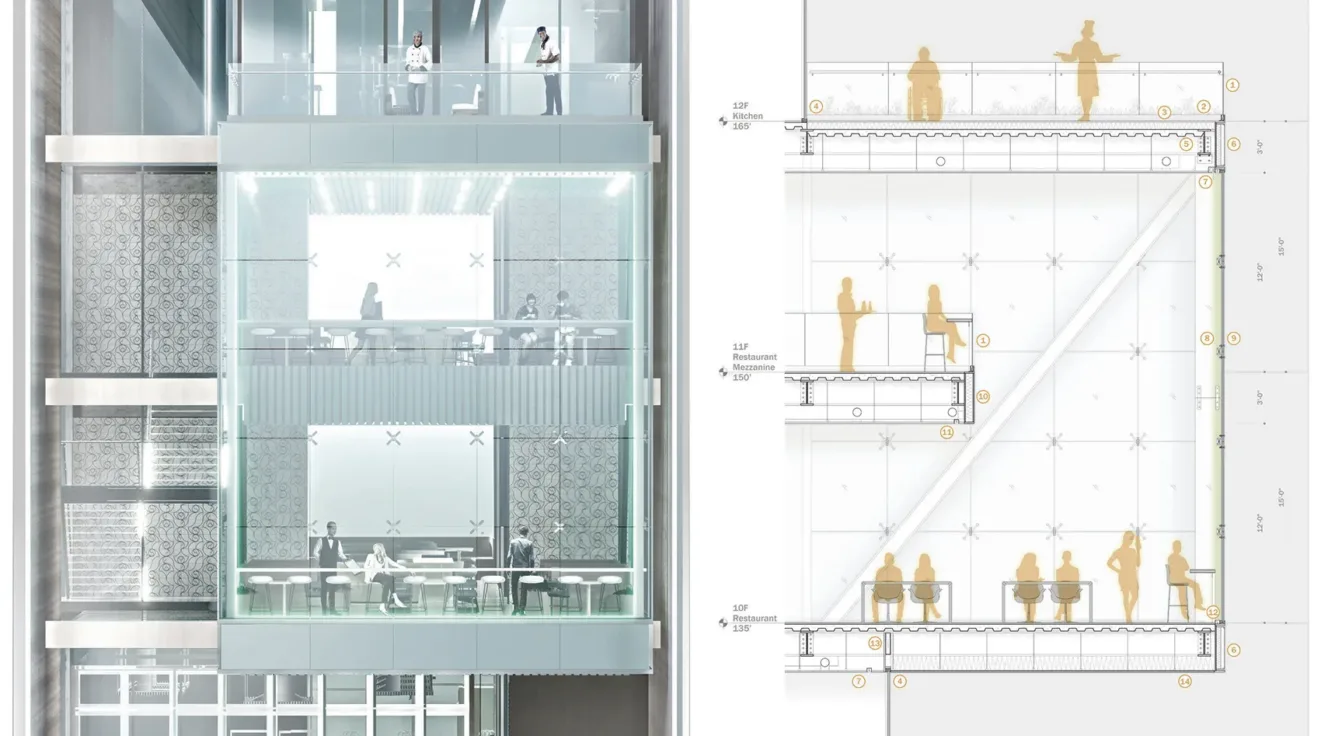ARCH 573: Building Performance Studio
Graduate Design Studio
Scott Murray, Spring 2020
The term “building performance” is traditionally associated with quantitative assessments: energy performance, structural systems, and fabrication techniques. While this quantitative approach is essential to ensure that buildings operate in efficient and environmentally-responsive ways, we must also be concerned with the qualitative performance of buildings: that is, how architecture affects people’s daily lives, how buildings engage their users in sensory and spatial experiences.
This studio places equal emphasis on the qualities of the spaces created as well as the quantitative technical development of enclosure and structural systems that support and define those spaces. The objective of this studio is to help students develop a design process that prioritizes the user’s experience (the daily experience of the office worker, the resident, the visitor) balanced with high-performance technical development.
Given the rapid pace of urbanization happening globally, with more than two-thirds of the world’s population expected to be urban dwellers by 2050, it is important for us to envision a future city in which density can productively co-exist with climate-responsive performance and where occupants’ quality of life is not merely accommodated but enhanced and enriched by their daily architectural experiences. Such architecture must not only meet the quantifiable needs for space and performance in a dense city, including energy demands of heating/cooling and lighting, but also must prioritize engaging people’s sensory experience of space, light, and materials. This requires us to work simultaneously at the urban scale and the human scale, to think about material properties and unique spatial experiences.
Working in an urban context invites us to engage certain critical relationships in architecture: between inside and outside, individual and collective, old and new. It is also important that we learn to engage the challenging site constraints that come with densely built-up city centers, most fully embodied by the infill site. As opposed to free-standing “object” buildings, which are atypical and even antithetical to urban density, the infill building, which shares a common wall with each of its neighbors, is arguably the prototypical site of the urban future. How can we re-think the urban infill site to achieve the goals stated above?
Following initial research on site and precedents, students will complete one semester-long design project: a new urban infill building, approximately 15-20 stories tall, located on a narrow but prominent site on South Michigan Avenue in Chicago. With a footprint 40-ft. wide by 170-ft. deep, this challenging site will require imaginative and inventive approaches to achieve qualitative performance.
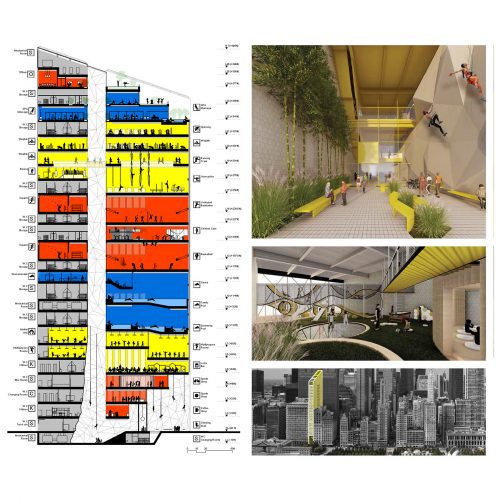
Felipe Flores, Huiya Yang

Felipe Flores, Huiya Yang

Felipe Flores, Huiya Yang
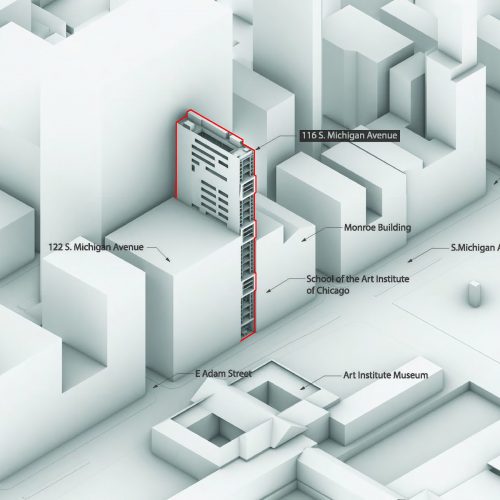
Madina Akhmetova, Somesh Tripathy
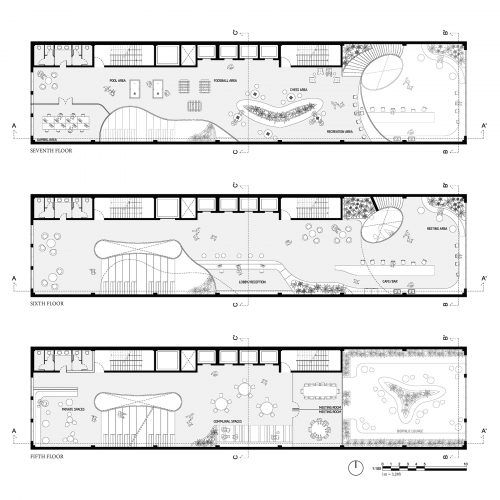
Marc de Antonio, Laura Tarda

Michelle Lorenz, Christine Boenzi
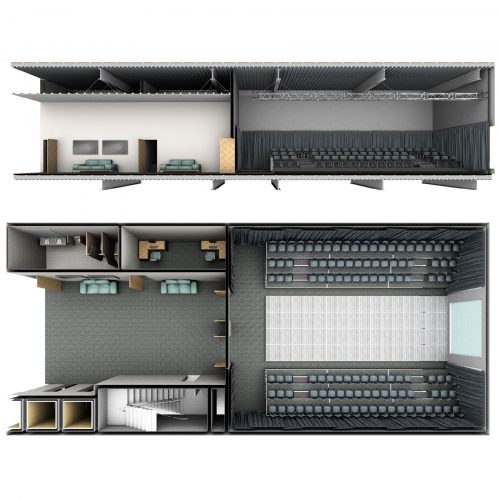
Ridhi Saran, Efrain Araujo

Ashish Dandekar, Marilia sa Ribeiro
